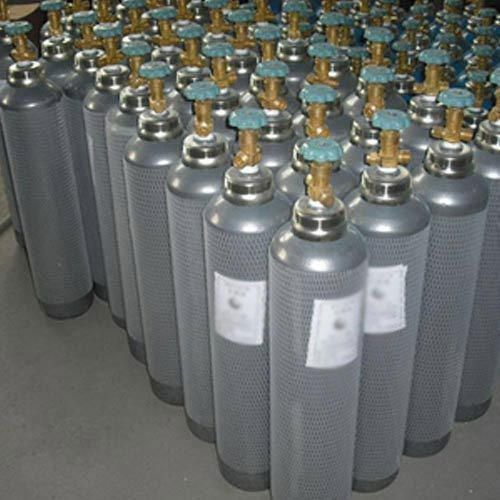Ghaziabad, Uttar Pradesh
- GST NO. : 09AAJHA6812K1Z4
Hydrogen Gas Cylinder Storage Services
There are Some preventive meassures Which a customer Should Take While Handling Hydrogen Gas cylinders.
- Never drop cylinders or permit them to strike each other violently.
- Cylinders should be assigned a definite area of storage. The area should be dry, cool, well-ventilated, and preferably fire-resistant. Keep cylinders protected from excessive temperature by storing them away from radiators or other sources of heat.Â
- Cylinders may be stored in the open, but in such cases should be protected against extremes of weather and from damp ground to prevent rusting.Â
- The valve protection cap should be left in place until the cylinder has been secured against a wall, a bench, or placed in a cylinder stand and is ready to be used.Â
- Avoid dragging or sliding cylinders, even for short distances. Cylinders should be moved by using a suitable hand truck.Â
- Do not use cylinders as rollers for moving material or other equipment.
- Never tamper with safety devices in valves or cylinders.Â
- When returning empty cylinders, close the valve before shipment. Leave some positive pressure in the cylinder. Replace any valve outlet and protective caps originally shipped with the cylinder. Mark and label the cylinder as "Empty". Do not store full and empty cylinders together.Â
- No part of a cylinder should be subjected to a temperature above 125°F (52°C). Prevent sparks or flames from welding or cutting torches or any other source coming in contact with cylinders. Do not permit cylinders to come in contact with electrical apparatus or circuits.Â
- Never permit oil, grease, or other readily combustible substances to come in contact with cylinders or valves.
- Use regulators and pressure relief devices when connecting cylinders to circuits having lower pressure service ratings.Â
- Smoking or open flames should be prohibited in hydrogen cylinder and tube storage and use areas.Â
- Know and understand the properties, uses, and safety precautions of hydrogen before using the gas and associated equipment. Consult the Air Products Material Safety Data Sheet (MSDS) for safety information.Â
- Always open a cylinder valve slowly. Never crack open a hydrogen cylinder to clear the valve of dust, as the escaping hydrogen may ignite. =
- Total storage capacity of an indoor hydrogen system should be limited to 3000 cubic feet or less.Â
- Hydrogen storage inside a building should not be near oxidants or other combustible storage.Â
- When finished with a cylinder, always close the valve. When work is to be interrupted for any length of time, the valve should be closed and all gas released from the hose and regulator to a safe location.Â
- If a cylinder or valve is defective or leaking, remove the cylinder to a remote outdoor location away from possible sources of ignition, and post the area as to the hazard involved. Notify your supplier.
- If a cylinder protective cap is extremely difficult to remove, do not apply excessive force or pry the cap loose with a bar inserted into the ventilation openings. Attach a label or tag to the cylinder identifying the problem and return the cylinder to the supplier.Â
- Wrenches should not be used on valves equipped with a hand wheel. If the valve is faulty, attach a label or tag to the cylinder identifying the problem and return the cylinder to the supplier.Â
- Compressed gas cylinders should not be refilled except by qualified producers of compressed gases.Â
- Shipment of a compressed gas cylinder filled without the consent of the owner is a violation of Federal Law.

